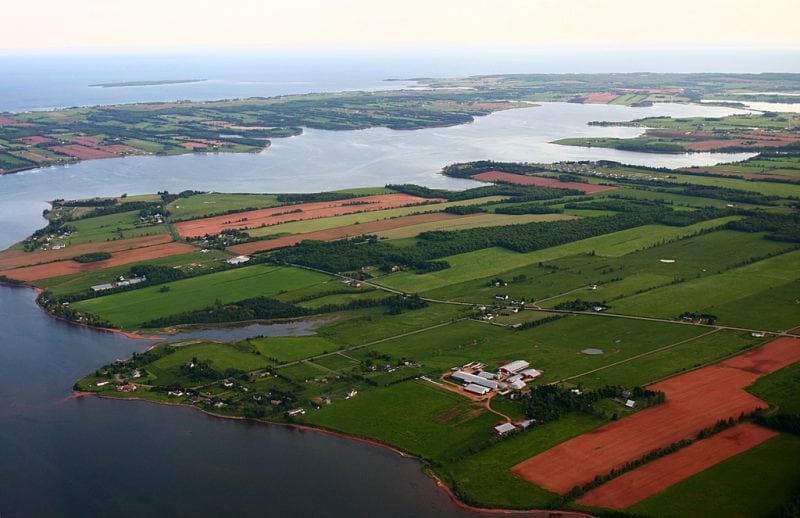
Food for the World’s 7 billion people comes from soil and water. Here in Northport, Nova Scotia, the soil is on farms that are on the Northumberland Strait, or connected to it. Water is the other connection. Some of the fresh water from farms drains into the seawater, carrying with it whatever it has picked up on the farms.
Water damage from farm soil and chemicals has not yet been reported for this part of Nova Scotia. But the same scenario has caused chronic problems on Prince Edward Island for many years. The pesticides that must be used for the protection of commercial potato crops have often been washed with soil into rivers which flow into the sea. The resulting fish kills always upset people. Financial and legal problems have resulted.
None of that is new. During the 1980s, The Canadian Government had a treaty with the United States for the protection of the Great Lakes from contaminants, especially agricultural pesticides. Ottawa Laboratories of Agriculture & Agri-Food Canada received funding for a 5 year Great Lakes Program. That started a focused physical chemistry research program for agricultural pesticides in soil and water, which continues to this day. Twenty years ago, the research program was moved to the Chemistry Department of the University of Calgary for 2 years. Since then it has continued in the Chemistry Department of Saint Mary’s University in Halifax N. S.
The latest report in the ongoing series of scientific publications is the article “The Chemistry Component Of Agricultural Pesticide Regulatory Technology (1)”. This is not a normal scientific research article. Instead, it looks at the government regulation of agricultural pesticides, and the 50 years of technical literature that influences it. The article interrupts the usual flow of the research program’s scientific progress reports.
This is because the article became urgent for two reasons. The first is that the technical literature was in trouble right from the beginning. Soil is the ultimate example of a physically and chemically irregular mixture. It is also dynamic. Political pressures forced investigators to respond to their pesticide contamination. A voluminous technical literature resulted. Authors measured the wrong variables, used the wrong units, calculated the wrong parameters, and ignored chemical stoichiometry. With nothing else to work with, government regulators attempted to use the chemically meaningless information for computer predictions. Legally-binding decisions for the registration of agricultural pesticides are still based on computer predictions that can be wrong by 1 to 3 orders of magnitude.
The other reason why this article is urgent is that the research program originating in Agriculture & Agri-Food Canada has reported some physical chemistry that can begin to make practical predictions for pesticide registration. This information is not yet being used by the government regulators or the multinational corporations that work with them. Governments and industry are also not supporting the continuation of the research, to improve the science and technology. There is much more to learn.
And the stakes are high: protecting the food and environment of billions of people; avoiding economic, social, and political damage. Also getting the science right.
These findings are described in the article entitled The chemistry component of agricultural pesticide regulatory technology, recently published in the journal Current Opinion in Environmental Science & Health. This work was conducted by Donald S. Gamble from Saint Mary’s University.









